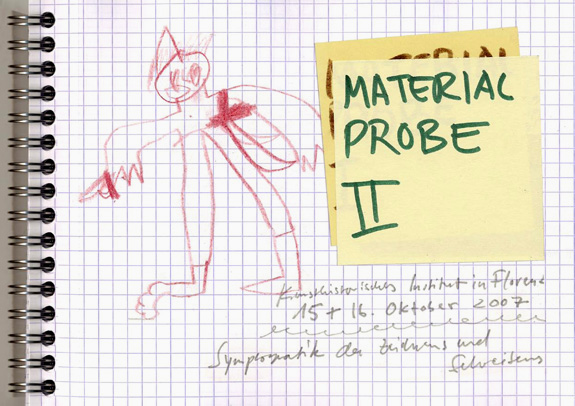

Kunsthistorisches Institut in Florence (Max Planck Institute), Sala conferenza, October 15-16, 2007
Reading a graphical recording as the symptom of a physical or mental state not only presumes a restructuring of expectation and the practice of reading, it is also bound to concrete changes in the scene of writing and drawing, which we would like to analyze in the framework of the second »Material Sample«. Here attention will be directed to the peculiarity of practices of writing things down, which not only intend to record certain phenomena (for in this respect conventional processes of drawing and writing are related), but at the same time aspire to an analysis of representation itself. With this precisely those characteristics move to the center of our interest which are generally restricted and controlled in the context of conventional scientific data storage, but are discarded, at the latest during the process of publication and translation into printed text or reproduction as a printed drawing, because they belong to the recording of the actual phenomenon accidentally, and even subjectively.
Certainly: not every graphical accident is granted the privilege of interpreting every symptom. And it takes a great deal of effort to transform conspicuous inscriptions into a trace, a legible sign of character, temperament, authorship, development, or anything else. The techniques that have emerged over the course of the last 200 years for the purpose of differentiating coincidental from motivated signs generally do not come into play until the actual act of writing or drawing has already taken place. They examine the gestures of drawing and reading from the »outlook of retrospection« (Stephan Kammer). But how were the relics of the supposed self-recording obtained and processed in the context of scientific research and in the process of artistic production? How were they made legible? Under what institutional, medial and material circumstances did lines, scribbling and lettering, which made the researcher or the viewer of art regard them not as descriptions of the world, but as abstruse signs of the mental/physical functional efficiency, disposition or pathology of their originators? And finally: what conceptions and terminology of »trace«, »symptom« and »expression« play a part in this?
Speakers: Peter Geimer, Stephan Kammer, Markus Klammer, Stefan Neuner, Armin Schäfer, Jutta Voorhoeve, Barbara Wittmann.
Contact: Barbara Wittmann, wittmann|at|mpiwg-berlin.mpg.de
Venue: Kunsthistorisches Institut in Florence (Max Planck Institute), Sala conferenza, 15–16 October 2007
 Program
–
PDF-File,
81.4 KB
Program
–
PDF-File,
81.4 KB